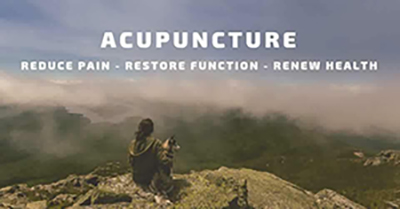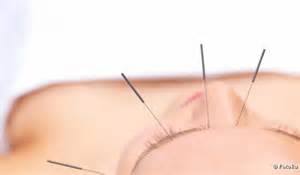
While most people have heard of acupuncture, many of us have never experienced it. A few things to expect your first time are a new patient consultation, then the needles are generally inserted and left in for about 20 minutes, and may be twisted for maximum effect. The new patient consultation addresses health issues, such as stress levels, sleep patterns, diet, etc. This helps to determine if any other Traditional Chinese Medicine services would help in your healing process, as well as where the needles should be placed.
A commonly asked question is “Does it hurt?”. Well, the answers vary from feeling “nothing” to a “pulsing” feeling to a general sense of “tugging” or a “dull ache”. While these answers may vary dramatically, a lot of it has to do with psychology, such as if someone has a fear of needles, or a negative connotation with them. Other factors that can have an impact on the comfort of your acupuncture session are hydration levels, pain threshold, if you are getting enough sleep, the body area being focused on, and depth of insertion. Body areas with more tissue and muscle mass aren't nearly as sensitive as areas with less tissue and muscle mass, such as your feet and hands. During a session, if you feel a persistent burning or stinging, let your practitioner know and measures will be taken to alleviate these sensations.
 Another fear people may have is the size of the needles. When most people think of needles, they think of needles used in Western medicine (thick, hollow, hypodermic needles). Needles used in acupuncture are very different, around 20 acupuncture needles can flt into one hypodermic needle. Needles used in acupuncture are filiform needles and are thin, inflexible, and solid.
Another fear people may have is the size of the needles. When most people think of needles, they think of needles used in Western medicine (thick, hollow, hypodermic needles). Needles used in acupuncture are very different, around 20 acupuncture needles can flt into one hypodermic needle. Needles used in acupuncture are filiform needles and are thin, inflexible, and solid.
There are many benefits to acupuncture, and it can treat many health conditions including chronic pain, allergies, asthma, stress and depression. The practice has also been used to treat insomnia, which can include symptoms of:
- Having a hard time falling asleep
- Having a hard time staying asleep
- Waking up before your body is ready to
Other treatments that may go along with acupuncture include:
Tui Na Massage: A therapeutic form of Chinese massage that can include soft tissue massage, manipulation, acupressure in conjunction with herbal compresses, ointments, liniments (pain relieving topical or lotion), and heat.
Reflexology: Massage that involves applying various amounts of pressure to the feet, hands, and ears
Ear seeds: Small seeds that you adhere daily to the ear to stimulate specific points on the body
While acupuncture can aid in relieving joint and muscle pain, it is important to remember to stretch and stay hydrated after a session. The stretches may vary depending on the area of the body that was focused on.
For more information or to book a session, contact us today!

